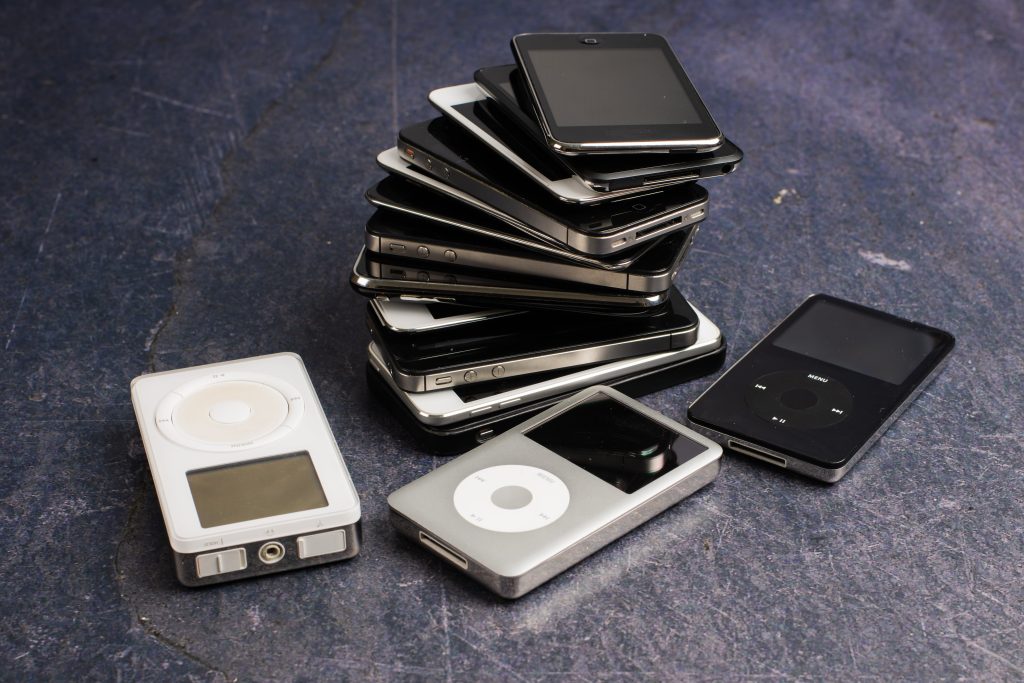
I know you love your technology devices; who don’t, right? Your temptation often rotates around the latest Smartphones, the sleekest laptops, and the coolest smartwatches. But here’s a brain teaser for you. Where does your old tech end up when you move on to the newest shiny E-thing? Let’s discuss the importance of managing electronic waste, commonly known as “e-waste”. This topic deserves attention, and together, we can explore ways to properly handle it, as it is as important as a sustainable fashion topic.
The amount of e-waste.
Small electronic devices, such as mobile phones and tablets, account for the largest share of e-waste produced. This means that tiny devices contribute the most to the total amount of e-waste generated worldwide. By 2030, the annual e-waste is expected to reach 75 million metric tons. To put this into perspective, the weight of the Empire State Building is approximately 365,000 metric tons. The equivalent amount of e-waste generated by 2030 would equal 205 Empire State Buildings combined.

Crazy, right? But wait, It is still yet to be finished; the United Kingdom has been ranked as the second-highest producer of e-waste in the world, generating a staggering 24 kilograms of it per person annually. To put this in perspective, imagine a car tire that weighs around 10 kilograms. Each individual in the UK generates e-waste equivalent to 2.4 car tires yearly! You can check here the other countries on the list for the e-waste generated yearly to boost awareness. Hence, this means that the UK alone produces an enormous amount of electronic waste. Adding all the countries combined, we can only imagine the severe environmental impacts of these devices if not disposed of properly.
The E-Waste Materials Problem.
Here’s the thing: these devices contain some dangerous materials like lead, cadmium, mercury, and flame retardants that can mess up the environment and human health if not disposed of properly. These hazardous materials can leak into the soil and water, contaminating the environment and posing a severe risk to human health. To give you an example, it can mess up your nervous system, kidneys and reproductive system, while mercury can cause respiratory problems, skin rashes, and neurological damage. Cadmium can cause kidney damage, while flame retardants have been linked to thyroid problems and developmental delays in children. I also invite you to read this interesting journal about e-waste toxicity to learn more about the additional impacts these materials have on the environment and the human body.
So, we all need to know about the dangers of e-waste and practice responsible e-waste management. One way to do this is by recycling electronic devices through certified e-waste recycling facilities. These facilities can safely extract and dispose of hazardous materials in an eco-friendly way.
Your Role as a Student.
As a student, you’re uniquely positioned to make a difference. You’re at the forefront of technology, constantly updating the latest devices for studying, communicating, and entertainment. But let me remind you of something first, “with great power comes great responsibility”, as Voltaire and Winston Churchill used to say, but also “From everyone who has been given much, much will be demanded”. Hence, It’s time to think in depth about what we can do to make the world a better place to live, or at least make a small contribution. The main three steps you can take are:
- If you want to save money on a new device, you can join a trade-in program. Just go to the website of your device’s maker and look for their trade-in program. Many companies have them nowadays, and checking takes a few minutes. You can learn about what devices qualify, how much credit you get, and the rules. When you join, you can use the credit you get from trading in your old device to make your new purchase cheaper. Plus, it’s good for the planet because it helps reduce electronic waste. Sounds good, right?
- If you want to avoid trading in your old electronic devices, doing it safely and eco-friendly is essential. One way to achieve this is by recycling your device through a certified e-waste recycling program. These programs ensure that our devices are recycled responsibly, which means that they don’t end up in landfills and cause harm to the environment. Instead, they are processed in a way that allows for the recovery and reuse of valuable materials like metals, plastics, and glass. Here is a small tip: when searching online for certified e-waste, include your city and postcode to get more results in your area and follow up with emails or phone numbers.
- Last but not least and very common to do, donate donate donate! Many organisations collect your old devices to give them to people in need and for educational or work purposes. If you want to find these organisations, you can still search for them online by adding specific keywords of your device model, or you can find them through marketplaces and even social media platforms where you can contact them much faster and efficiently, saving you time.
So there you have it. E-waste is a big problem, but it’s not insurmountable. So consider sharing these small tips with your friends or families to raise awareness. As students, we have the power to make a difference; our voices are stronger than we think. By being mindful of our consumption and disposal of electronic devices, we can help reduce e-waste and protect our planet. After all, we’re not just tech-loving students but also awesome, earth-saving humans who love our planet. Hence, remember to trade in, look for an e-waste certified, and donate your old device. Not only does it save you time, but it also makes a small contribution to the environment.
